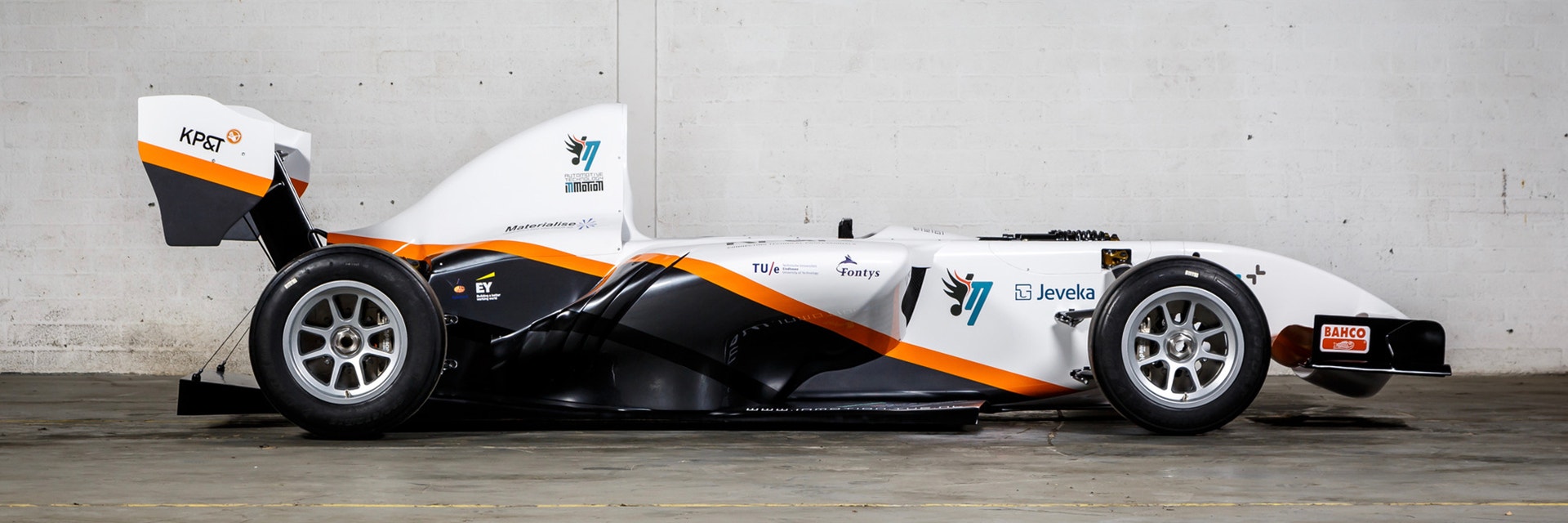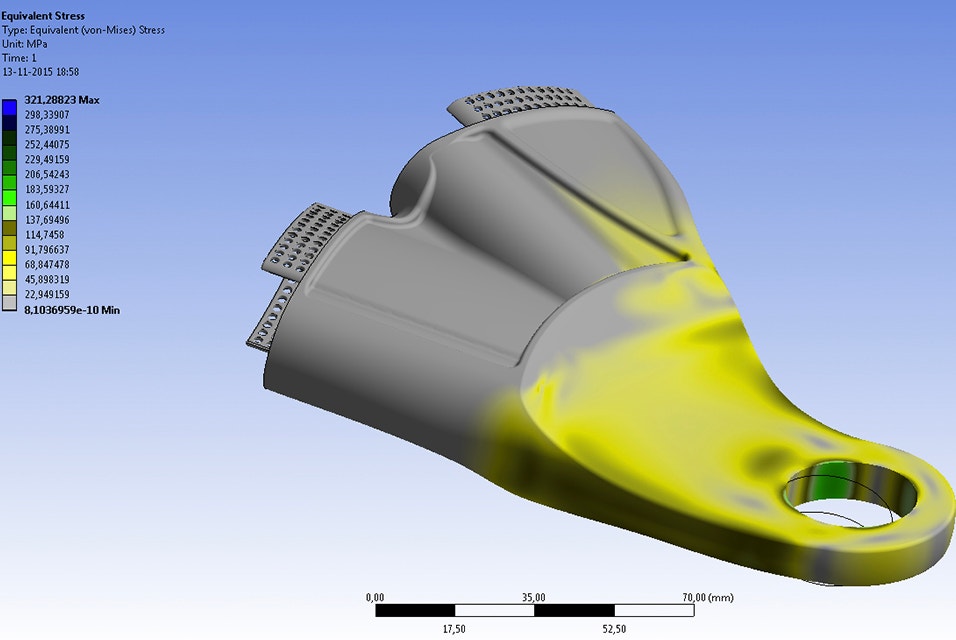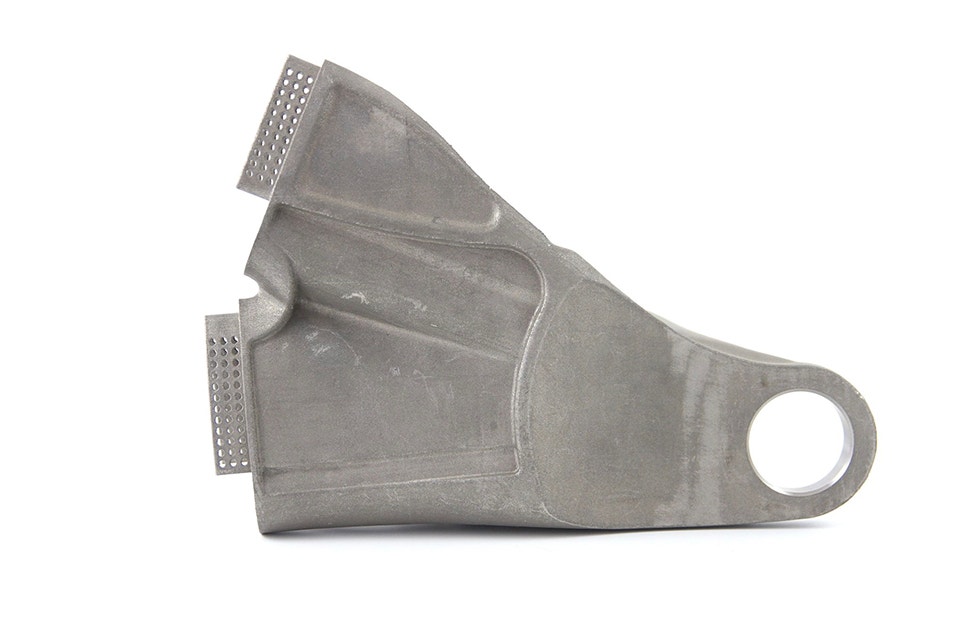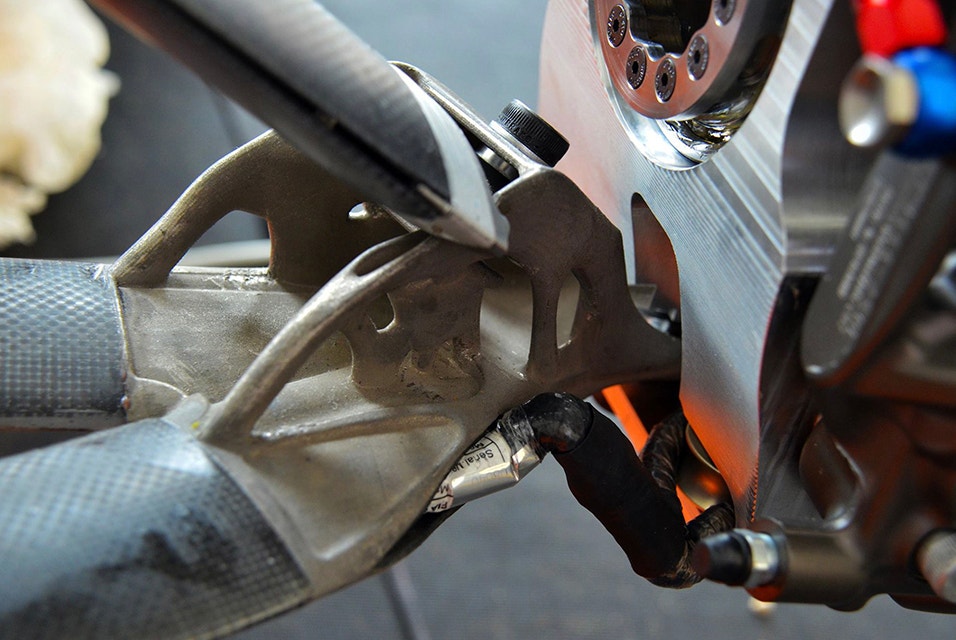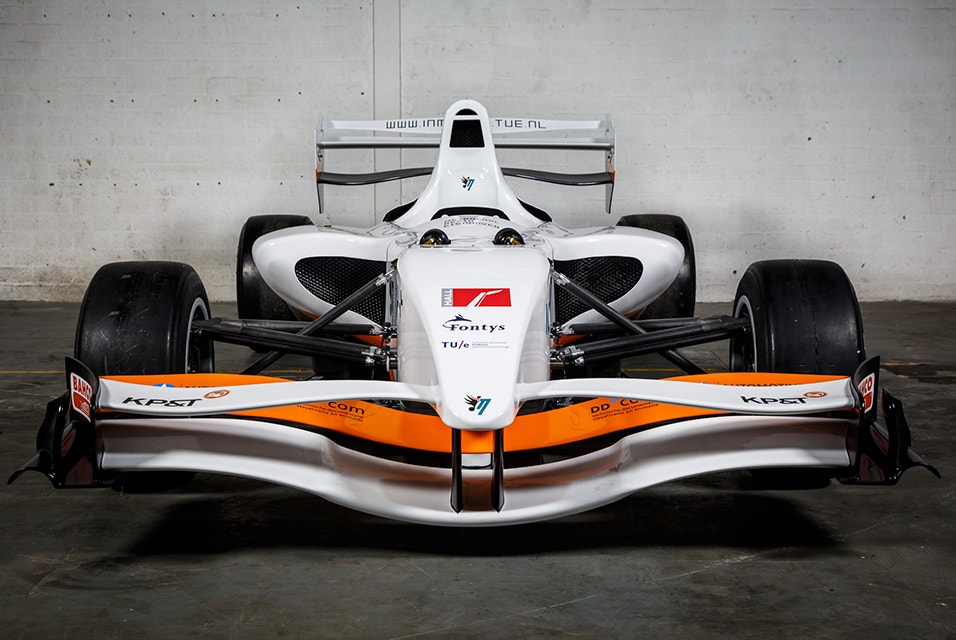CASE STUDY
Setting Wheels InMotion: 3D Printing Titanium Parts for an Electric Race Car
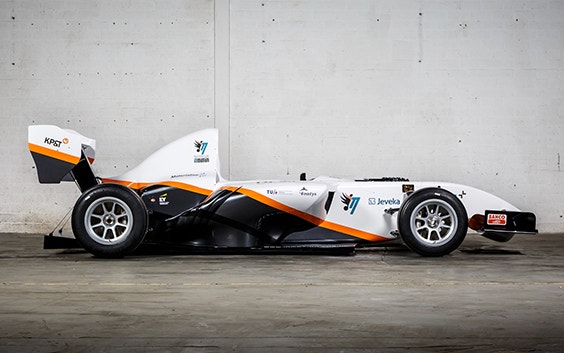
When you’re aiming to make the fastest electric car in the world, every bit of weight optimization matters. That’s why we helped InMotion create lightweight 3D-printed wishbones for their race car’s suspension. By harnessing the combined power of Materialise 3-matic software and our Metal Competence Center in Bremen, InMotion were able to set forth on an ambitious journey with confidence.
The challenge
Build the lightest possible Y-joints for a record-breaking attempt
In 2015, InMotion, a team of engineering students from the Technical University of Eindhoven set itself a challenging goal: to compete in the legendary 24 Hours of Le Mans by 2019. To support their bid for candidacy, they first aimed to break the electric-track record at the Nürburgring in Germany.
Wanting to maximize their chances of success, InMotion studied the idea of using lightweight 3D-printed Y-joints (also known as wishbones) for the car’s suspension — the wishbones connect the uprights to the chassis of the car, essentially holding the wheels in place. As well as being light, it’s crucial that they are strong enough to withstand all the forces the car is subject to while racing at high speeds.
InMotion designed the parts themselves and came to Materialise for support in optimizing the design for 3D printing using titanium. As an additional challenge, the team wanted to find a way to avoid having to use support structures during the printing process — the suspension arms are connected to the uprights via spherical ball bearings, and InMotion didn’t want the manual removal of any support structures to pose a last-minute challenge to the fit of these crucial components.
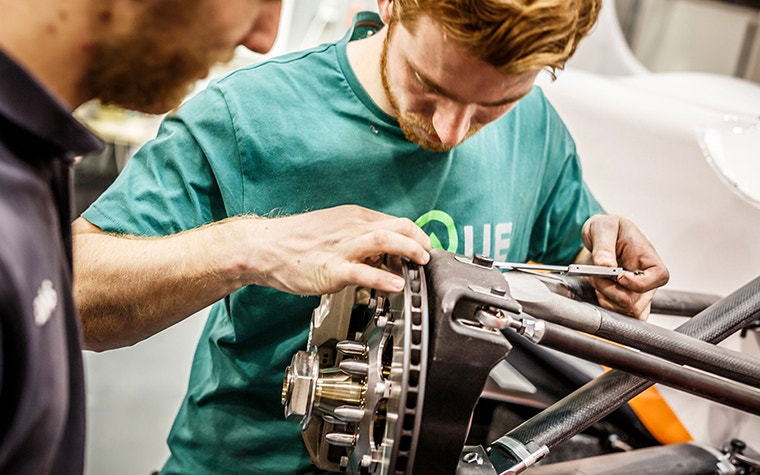

The solution
Titanium parts, 3D printed with a honeycomb structure
Even though titanium already has a very low specific weight, the engineering team at Materialise had a suggestion to make the initial InMotion-designed part even lighter. With our proprietary software program Materialise 3-matic, the Materialise software team could fill the hollow cavities with a honeycomb structure to reduce the parts’ weight without compromising their strength.
Materialise 3-matic once again showed its strength when it came to addressing InMotion’s request to avoid the use of support structures during printing. Jannis Kranz, Design Engineer for metal 3D printing at Materialise explains: “Thanks to our software, we could find a build orientation that allows us to print the part as a self-supporting structure, removing the need for a generated support structure.”
The result
Fast turnaround for precisely printed end-use parts
Printing the wishbones at Materialise’s Metal Competence Center in Bremen was challenging, but in the end, the lead time for the entire project was under one working week.
And it wasn’t just fast: the desired precision was achieved too. “The precise fit that was needed for the assembly of the suspension arms didn’t cause us any trouble,” says Rogier from InMotion. “The accuracy was high: everything fit perfectly from the outset. Any small imperfection would have come up during assembly.”
Share on:
This case study in a few words
Automotive
Materialise 3-matic
Metal 3D printing
Titanium
Weight reduction
Design optimization
Faster lead times
